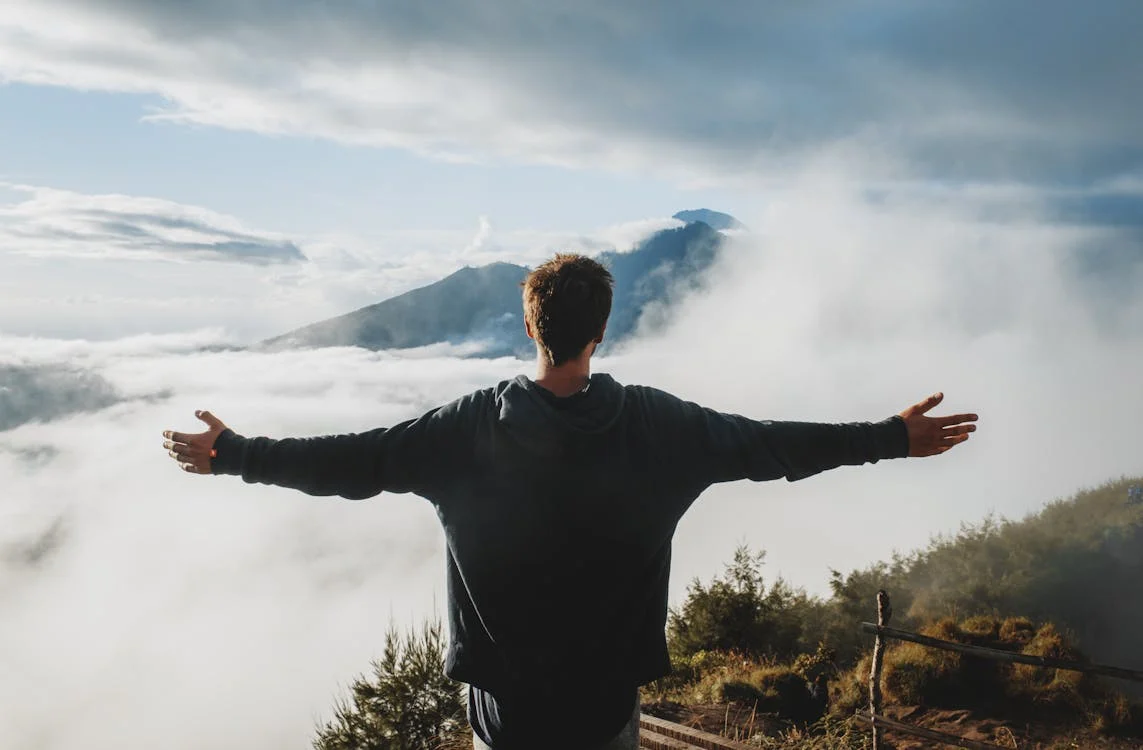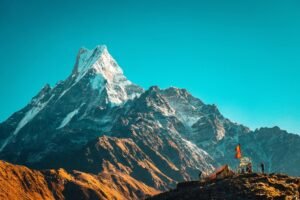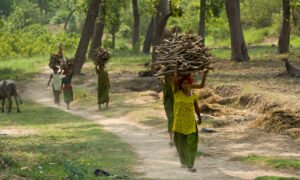The Himalayas, often revered as the “Roof of the World,” are synonymous with towering giants like Everest, K2, and Kanchenjunga. These peaks, while impressive and historically significant, have become almost mainstream in the world of mountaineering. For those seeking adventure away from the crowded base camps and over-trodden paths, the Himalayas offer a plethora of lesser-known peaks that provide equally thrilling climbs and spectacular vistas. This article explores some of these hidden gems, each a worthy challenge for mountaineers.
1. Mount Khangchendzonga (8,586 meters)
While Khangchendzonga is the third highest peak in the world, its subsidiary peaks are less frequented. Located in Sikkim, India, this massif offers challenging climbs with fewer crowds. The East Face of Khangchendzonga, known as the North-East Spur, presents a difficult route with steep ascents and technical ice climbing.
Highlights:
Rich biodiversity in the surrounding Khangchendzonga National Park, a UNESCO World Heritage Site.
Sacred status among the local Sikkimese people, adding a layer of cultural significance to the climb.
Challenges:
Technical routes requiring advanced mountaineering skills.
Unpredictable weather conditions and remote access.
2. Mount Nun (7,135 meters)
Mount Nun, located in the Suru Valley of the Indian Himalayas, is part of the Nun Kun massif. It stands as a significant peak in the Ladakh region, offering climbers a relatively less crowded but challenging ascent.
Highlights:
Panoramic views of the Zanskar and Ladakh ranges.
Proximity to the Buddhist monasteries in the region, allowing for a unique cultural experience.
Challenges:
Harsh weather conditions with extremely low temperatures.
Technical ice and rock climbing sections that test the climber’s endurance and skill.
3. Ama Dablam (6,812 meters)
Ama Dablam, though relatively popular among seasoned climbers, remains a lesser-known challenge compared to Everest. Located in the Khumbu region of Nepal, its striking pyramid shape makes it one of the most picturesque peaks in the Himalayas.
Highlights:
Stunning views of Everest, Lhotse, and Makalu.
– Proximity to the Sherpa villages and the famous Tengboche Monastery.
Challenges:
Technical climbing with exposed ridges and steep ice sections.
High altitude and potential for avalanches.
4. Makalu (8,485 meters)
Makalu, the fifth highest peak in the world, is a challenging climb that receives far fewer visitors than Everest. Its remote location on the border between Nepal and Tibet contributes to its allure for climbers seeking solitude.
Highlights:
Spectacular views from the summit, including a unique perspective on Everest and Lhotse.
Diverse flora and fauna in the Makalu-Barun National Park.
Challenges:
Extremely technical climbing with knife-edge ridges and overhanging ice.
Harsh weather and isolated location requiring a high degree of self-sufficiency.
5. Shivling (6,543 meters)
Shivling, often called the “Matterhorn of the Himalayas,” is located in the Garhwal region of Uttarakhand, India. Its stunning symmetry and sheer faces make it a favorite among climbers looking for technical rock and ice challenges.
Highlights:
Proximity to the sacred source of the Ganges River at Gaumukh Glacier.
Rich spiritual significance in Hindu mythology.
Challenges:
Technical rock and ice climbing with exposed routes.
Unstable weather patterns and potential for rockfall.
6. Thalay Sagar (6,904 meters)
Thalay Sagar, another jewel in the Garhwal Himalayas, offers one of the most technically challenging climbs in the region. Its steep north face attracts elite climbers from around the world.
Highlights:
Close proximity to the Gangotri Glacier, providing a dramatic backdrop.
Challenging mixed routes that test a variety of climbing skills.
Challenges:
Highly technical routes requiring advanced climbing techniques.
Severe weather and difficult approach paths.
7. Meru Peak (6,310 meters)
Meru Peak in the Garhwal Himalayas gained fame from the documentary “Meru,” which showcased the treacherous Shark’s Fin route. This peak offers climbers one of the most difficult ascents in the world.
Highlights:
Renowned Shark’s Fin route, considered one of the most difficult climbs globally.
Stunning views and the opportunity to follow in the footsteps of legendary climbers.
Challenges:
Extremely technical climbing with severe exposure.
High risk of avalanches and unpredictable weather conditions.
8. Mount Kang Yatse (6,400 meters)
Located in the Markha Valley of Ladakh, Mount Kang Yatse offers an excellent mix of trekking and climbing. The peak has two summits, with Kang Yatse II being a popular choice for less experienced climbers looking for a non-technical ascent.
Highlights:
Breathtaking views of the Zanskar and Ladakh ranges.
Opportunity to explore the cultural heritage of the Ladakhi people.
Challenges:
Remote location requiring a long approach trek.
Variable weather conditions and potential for altitude sickness.
9. Mera Peak (6,476 meters)
Mera Peak, one of the highest trekking peaks in Nepal, provides a relatively straightforward climb with stunning views of five of the world’s six highest mountains. It’s an excellent choice for climbers looking to acclimatize before attempting higher peaks.
Highlights:
Spectacular panoramic views of Everest, Lhotse, Cho Oyu, Makalu, and Kanchenjunga.
Less technical climb suitable for moderately experienced climbers.
Challenges:
High altitude and potential for severe weather.
Long approach trek requiring good physical fitness.
10. Pisang Peak (6,091 meters)
Pisang Peak in the Annapurna region of Nepal is a popular trekking peak that offers a blend of cultural exploration and climbing adventure. It is often climbed as part of the Annapurna Circuit trek.
Highlights:
Stunning views of the Annapurna range.
Rich cultural experience in the surrounding villages.
Challenges:
Steep and icy sections requiring basic mountaineering skills.
Weather conditions can be unpredictable, especially during the monsoon season.
The lesser-known peaks of the Himalayas offer climbers a unique opportunity to explore remote, unspoiled regions while facing significant mountaineering challenges. These peaks not only provide physical and technical climbing experiences but also immerse climbers in the rich cultural and natural heritage of the Himalayan regions. Whether seeking solitude, technical difficulty, or cultural immersion, these hidden gems stand as worthy goals for any avid mountaineer.
Tips for Climbing Lesser-Known Peaks
1.Research and Preparation : Thoroughly research your chosen peak, including routes, weather patterns, and necessary permits. Preparation is key to a successful and safe expedition.
2. Technical Skills : Ensure you have the necessary technical climbing skills and experience. Some of these peaks require advanced knowledge of ice climbing, rock climbing, and high-altitude mountaineering.
3. Physical Fitness : High-altitude climbs demand excellent physical conditioning. Engage in a rigorous fitness regimen leading up to your expedition.
4. Acclimatization : Proper acclimatization is crucial to prevent altitude sickness. Plan your ascent with sufficient time for gradual acclimatization.
5. Local Guides and Support : Hiring local guides can enhance your experience and safety. They bring invaluable knowledge of the terrain, weather, and cultural nuances.
6. Environmental Responsibility : Practice Leave No Trace principles. Respect the pristine environments of these peaks and minimize your ecological footprint.
7. Respect Local Cultures : The Himalayas are home to diverse cultures and spiritual beliefs. Respect local customs, traditions, and sacred sites during your expedition.
Embarking on an expedition to one of these lesser-known Himalayan peaks promises an adventure of a lifetime, filled with awe-inspiring landscapes, challenging climbs, and cultural enrichment. So, pack your gear, hone your skills, and set off on a journey to explore the hidden gems of The Himalayas.





